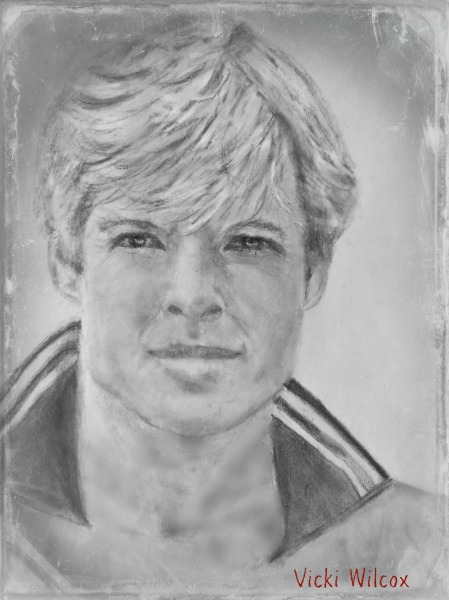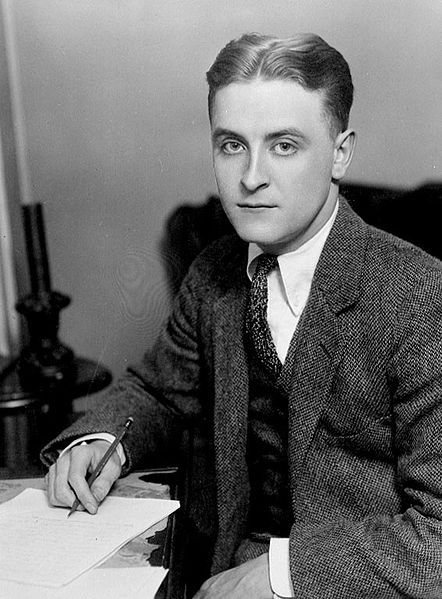
Vicki Wilcox’s “The Great Gatsby”
A portrait of Robert Redford as Jay Gatsby
F. Scott Fitzgerald’s The Great Gatsby is a 1925 novel that followers a group of characters living in West Egg, a fictional town on Long Island during the summer of 1922. The story’s plot centers Jay Gatsby, a young and reclusive millionaire, and his captivation with the beauty of Daisy Buchanan. The story highlights Gatsby’s perception of the American dream and juxtaposes it with the realities of the Roaring Twenties, including examinations of idealism, societal norms and a depiction of life during the Jazz Age.
The novel masterfully provides an in-depth perspective into various aspects of the 1920s, including the ambitions of its people and how they choose to live their lives. How people experience their lives socially became the author’s strongest inspiration in creating the novel. In 1923, Fitzgerald began planning the novel after attending several parties while visiting Long Island’s north shore. There he decided to develop a story featuring all the social inspirations he acquired while on Long Island.

Fitzgerald desired to create “something new-something extraordinary and beautiful and simple and intricately patterned.” The novel were to become a stand out in literature for telling a story that is perceived as drastically different than many of the pastoral stories in American culture during this time period.
While the story is widely regarded as one of the classics in literature, after its publication in 1925, the novel received mixed reviews and poor sales. The book only sold 20,000 copies in its first year. Fitzgerald died in 1940, never getting the chance to see the novel become one of the greatest in American literature.
The Great Gatsby became extraordinarily popular during World War II, for its depiction of culture and providing an avenue for escapism to American readers emotionally drained from the war. The book became a part of American high school curricula and had been produced in a variety of different films and stage plays.
Today The Great Gatsby is referred to as a “Great American Novel.” It is still featured in many high school and college curricula in the United States and around the world. It was voted the second best novel in the English language by the Modern Library editorial board in 1998.
Grant Old’s “Red Flapper”
The novel possesses a significant historical content. Scholars examine the narrative tale for its historical depiction of the Roaring Twenties, particularly economics, the popularity of jazz music, flapper culture, and how the common man had been capable of crimes (like bootlegging) that made it more challenging for others to experience their lives. Fitzgerald masterfully incorporates details that paint an authentic portrait of life in the 1920s, everything from the style of dress, choice of beverages, styles of automobiles and societal behaviors. These depictions made the novel timeless and relevant for examination by all generations of readers.
Many literary theorists assert that Gatsby is a reflection of Fitzgerald’s life and experiences. After all, it was the author’s experience attending parties in Long Island that inspired the creation of the novel. In addition it appears that many of the author’s personal life experiences are present within the novel. The story’s narrator for example, Nick Carraway had been educated at an Ivy League school just as did the author. Fitzgerald also fell in love while stationed in the military in similar fashion as Jay Gatsby, submitting to a life of proving his love through a life of decadence. In many instances, the novel is the author’s chance to examine his feelings about the time period and the choices he and his peers made during it.
While there have been several film adaptations of the novel, the most successful is the 2013 adaptation starring Leonardo DiCaprio, Tobey Maguire, Carey Mulligan, Joel Edgerton and Elizabeth Debicki. To date the film has grossed more than $350 million worldwide and won Oscars for Best Production Design and Best Costume Design. In additional to the traditional film format, the movie was available in 3D at select theaters around the world.
The Great Gatsby’s appearances in a variety of creative platforms, including literature, film and theater, is an innovation onto itself. The social relevance of the novel remains, solidifying the story’s place as a classic in American literature and in other cultures around the world. Just as the author had been inspirited by the 20s, artists, critics, and students find inspiration through the experiences of the characters within the classic narrative.
